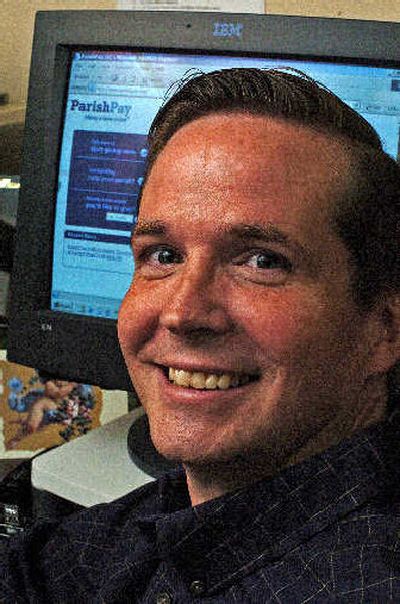E-offerings

For Bob and Theresa Cudequest, devout but busy Roman Catholics, technology truly is a blessing.
Instead of digging through their wallet for cash or hurriedly writing a check – or even missing a payment altogether when they can’t make it to Mass – the New Jersey couple simply have their monthly church offering deducted from their bank account.
“It’s one less thing to think about as we’re running out the door,” says Theresa Cudequest, 40, who along with her husband and four children belong to The Church of the Presentation in Upper Saddle River.
The Cudequests are part of a growing wave of American parishioners who are making their church offerings electronically.
The practice has raised some eyebrows among critics who say it can lead churches to emphasize money over attendance. But churches that encourage this type of giving say it stabilizes their income.
More and more churches are working with companies so that members of their congregation can have their offerings deducted directly from their bank account or charged to a credit card.
The Newark Archdiocese recently sent out letters to all of its 230 parishes in northeastern New Jersey, introducing them to the idea of electronic giving.
For the past two years, The Church of the Presentation has been working with ParishPay LLC, a Manhattan-based company that deals with about 2,000 U.S. parishes.
Another company that provides similar services is Minnesota-based Vanco Services, which contracts with nearly 6,500 congregations nationwide.
The businesses usually make their money by charging a fee per transaction and sometimes a setup fee. The church saves by not sending parishioners envelopes that they use to put cash or checks in the collection basket.
Churches like electronic giving because it helps minimize dips in collections during the summer when families go on vacation or when attendance is low because of bad weather.
Catholic churches historically are thought to receive much lower giving per member than other denominations, and parishes that depend on unpredictable weekly offerings can struggle.
Dennis Corcoran, director of operations for The Church of the Presentation, says he decided to explore ways the parish could stabilize its income after asking the parish finance council how it came up with a budget: “They joked with me and said, ‘We sit in a room and burn incense and throw a number up in the air.’ “
About a third of the church’s 1,100 households who regularly attend services have signed on to give electronically, Corcoran says.
In the summer vacation months, the collection used to range from $16,000 to $21,000 a week. Last summer, the church’s second using ParishPay, income averaged about $20,000 to $22,000 a week, he says.
When these services first came out, parishioners and church personnel had their concerns – namely, is this OK with God?
Corcoran says spiritually there’s nothing wrong with electronic giving, and it’s a natural progression for the church.
There were “no monetary gifts back in the early church,” he says. “You donated a goat or a chicken. It was a huge leap when they went to putting a check in the collection basket.”
Vanco Services says it also has signed up Lutheran, Methodist, Mennonite, Presbyterian and Baptist churches as well as a few synagogues. ParishPay has focused mainly on Catholic churches but also has clients in other denominations, including Greek Orthodox and Episcopal parishes.
Not everyone looks on electronic offerings as heaven-sent. Jack Wilkerson, vice president of business and finance for the Southern Baptist Convention’s Executive Committee, says the convention does not have an official position on electronic donations, but he has some reservations.
“The system is not the problem,” Wilkerson says. “The problem that we’re dealing with is irregular attendance to the local church.”
He feels religious organizations are trying to address a drop in attendance and funding by introducing new technology instead of finding ways to get more people in their pews.
In the Cudequests’ case, something that started out as a simple matter of convenience also became a way to have a stronger connection with their faith. Theresa Cudequest says the electronic donation helps them plan and make giving a priority rather than deciding how much to give as the basket passes each week.
“This parish offers so much to us as a family that ParishPay is a very simple way to give back,” she says.